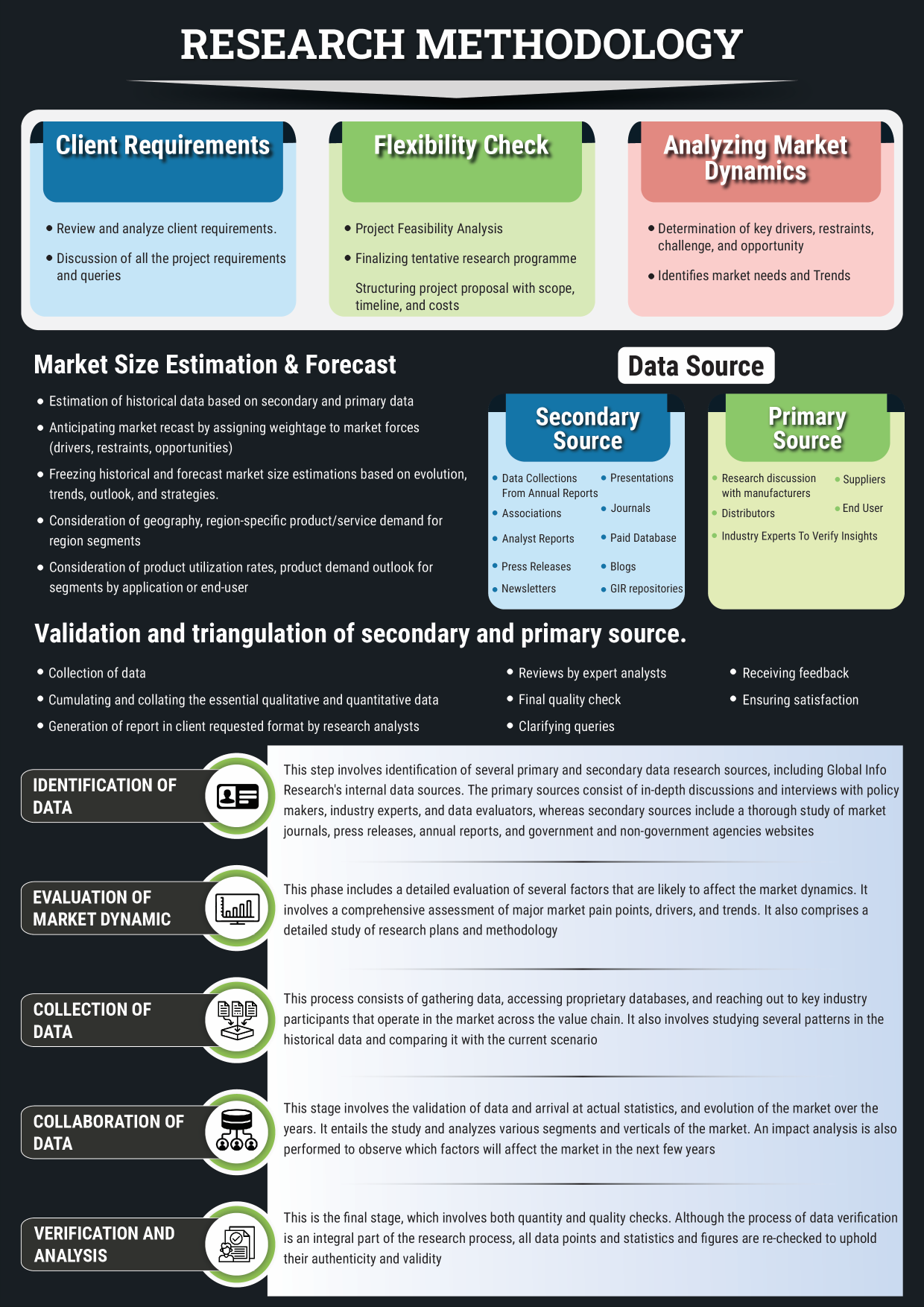Introduction: Shaping the Future of Connected Health Monitoring
The medical alert systems market is undergoing a transformative shift as we approach 2025. No longer just panic buttons for emergencies, modern alert systems are becoming essential tools in remote health monitoring, independent senior living, and chronic disease management. Driven by digital health integration and demographic trends, these systems are emerging as cornerstones of preventive care and patient safety.
With increasing adoption among aging populations, caregivers, and healthcare providers, medical alert systems are evolving from reactive solutions to proactive healthcare technologies. The focus is shifting toward seamless connectivity, predictive features, and wearable convenience—creating a new standard in personal health safety.
Market Drivers: The Push Behind Widespread Adoption
The accelerated growth of the medical alert systems market is underpinned by several interconnected factors:
- Aging Global Population: Seniors are projected to represent a significant portion of the global population by 2025. The need for independent yet secure living has made medical alert systems a critical solution in elder care.
- Rising Prevalence of Chronic Illnesses: Patients managing conditions like diabetes, heart disease, and epilepsy benefit from around-the-clock monitoring. Medical alert systems ensure rapid response in emergencies, improving outcomes.
- Healthcare Cost Pressures: Reducing hospital admissions and enabling early interventions through remote alert systems helps ease the financial burden on healthcare infrastructures.
- Demand for Remote Monitoring: The post-pandemic healthcare model has seen a surge in home-based care. Devices that support remote monitoring and emergency assistance are now central to patient management strategies.
- Increased Awareness and Acceptance: As tech-savvy generations age, adoption barriers are dropping. Today’s users demand user-friendly, reliable, and non-intrusive wearable devices.
Innovation: From Emergency Buttons to Intelligent Health Platforms
Technological advancements are revolutionizing the medical alert systems market. The 2025 landscape is characterized by devices that combine real-time communication, wearable integration, and predictive analytics.
- AI-Powered Alert Systems: Artificial intelligence is being leveraged to detect abnormalities in user behavior, such as changes in mobility or speech, enabling early warnings before a fall or medical emergency.
- GPS and Geofencing Capabilities: Modern devices offer location-based services that alert caregivers when a user leaves or enters a specific area—crucial for dementia or Alzheimer’s patients.
- Smart Wearables: Medical alert features are now embedded in smartwatches and fitness trackers, allowing discreet use and 24/7 monitoring without stigmatizing the user.
- Voice Activation and Touch-Free Interfaces: New systems are adopting voice commands, which aid accessibility for users with mobility impairments or visual limitations.
- Cloud-Based Dashboards: Real-time data is shared with caregivers and clinicians via secure cloud platforms, enabling proactive care and documentation.
Regional Market Dynamics: A Global Shift in Demand
Each region contributes differently to the growth of the medical alert systems market, influenced by population trends, healthcare access, and policy frameworks.
- North America leads the global market due to its advanced healthcare systems, high aging population, and insurance support for home-based health solutions.
- Europe is focusing on digital health innovation and elder care, with countries like Germany and the UK implementing national strategies for aging-in-place.
- Asia-Pacific is emerging as a high-growth region, led by Japan’s super-aged society and South Korea’s smart city initiatives. Meanwhile, China and India present large-scale opportunities with mobile-first solutions.
- Latin America and Middle East & Africa are showing gradual adoption, aided by growing urbanization, mobile connectivity, and increased focus on home healthcare.
Strategic Considerations: What Industry Leaders Must Prioritize
To succeed in the competitive landscape of medical alert systems in 2025, companies must strategically balance innovation, affordability, and user experience.
- User-Centric Design: Simplicity, clarity, and ease of use are non-negotiables, especially for senior users. Devices must offer intuitive interfaces with minimal learning curves.
- Affordability and Access: Pricing models that align with payer systems, government programs, or subscription models can drive broader adoption, especially in cost-sensitive regions.
- Data Security Compliance: HIPAA, GDPR, and other privacy regulations must be central to platform design, ensuring trust and legal alignment.
- Partnership Ecosystems: Collaborating with healthcare providers, insurers, and smart home platforms will increase value proposition and user loyalty.
- Brand Positioning: Companies that emphasize safety, independence, and emotional well-being—not just technology—will better connect with end users and caregivers.
Conclusion: A Connected Future for Patient Safety
The Medical Alert Systems Market in 2025 is redefining how we think about personal safety, elderly independence, and home-based health management. These systems are no longer optional accessories—they are becoming essential healthcare companions.
By embracing intelligent design, regional adaptability, and user trust, industry players can shape the next generation of proactive care. As health systems evolve to meet rising demand, medical alert technologies will remain at the forefront of a safer, smarter, and more connected future in global healthcare.
NOTE:
Quants and Trends is proud to offer an extensive portfolio of meticulously researched healthcare market reports, numbering in the thousands. We also provide tailored customization services to ensure our insights align precisely with your strategic objectives and informational needs. For personalized assistance or to discuss your specific requirements, we invite you to get in touch with our team. We also encourage you to request a complimentary sample PDF report. Please visit our Sample Request Page to receive yours today.
Key Market Players
Philips Lifeline
ADT
Tunstall
Greatcall
Alert-1
Connect America
Bay Alarm Medical
Life Alert
Rescue Alert
Mobile Help
Medical Guardian
LifeStation
Galaxy Medical Alert Systems
Lifefone
Better Alerts
Segmentation By Type
Landline Type
Mobile Type
Standalone Type
Segmentation By Application
Inside the Home
Outside the Home
Segmentation By Region
North America (United States, Canada and Mexico)
Europe (Germany, France, United Kingdom, Russia, Italy, and Rest of Europe)
Asia-Pacific (China, Japan, Korea, India, Southeast Asia, and Australia)
South America (Brazil, Argentina, Colombia, and Rest of South America)
Middle East & Africa (Saudi Arabia, UAE, Egypt, South Africa, and Rest of Middle East & Africa)
Market SWOT Analysis
What are the strengths of the Medical Alert Systems Market in 2025?
The market benefits from a growing aging population, increasing demand for home healthcare solutions, and rising awareness about personal safety. Technological advancements such as fall detection, GPS tracking, and integration with mobile apps enhance system effectiveness, making these devices more appealing to consumers.
What weaknesses might affect the Medical Alert Systems Market in 2025?
High initial costs for advanced systems can be a barrier for many potential users. Additionally, some elderly users may face difficulty in using high-tech devices, leading to lower adoption rates. Lack of awareness about available features can also limit market growth in certain regions.
What opportunities exist for the Medical Alert Systems Market in 2025?
Expanding into emerging markets with growing elderly populations presents a significant opportunity. Partnerships with healthcare providers and insurance companies could lead to more affordable and widespread adoption. Moreover, integrating alert systems with telemedicine and remote patient monitoring could increase system demand.
What threats could hinder the growth of the Medical Alert Systems Market in 2025?
Rising competition from other healthcare technology solutions could reduce market share for traditional medical alert systems. Data privacy concerns and potential cybersecurity threats could deter customers from fully trusting these devices. Additionally, economic downturns may affect consumer spending on non-essential healthcare products.
Market PESTEL Analysis
How do political factors impact the Medical Alert Systems Market in 2025?
Government policies on healthcare, especially those related to elderly care, can influence the demand for medical alert systems. Subsidies or funding for senior healthcare programs could promote wider adoption. Regulatory requirements regarding the safety and efficacy of these devices could also shape market dynamics.
How do economic factors affect the Medical Alert Systems Market in 2025?
Economic conditions such as disposable income, healthcare budgets, and insurance coverage play a crucial role in market growth. In times of economic prosperity, consumers are more likely to invest in advanced alert systems. Conversely, during economic downturns, non-essential healthcare products might experience reduced demand.
How do social factors influence the Medical Alert Systems Market in 2025?
The aging population, growing awareness of personal safety, and the desire for independence among seniors are significant drivers. Social stigma around elderly care and safety could diminish as people become more open to using technology for health management. Family caregivers also play a role in decision-making for alert system purchases.
How do technological factors impact the Medical Alert Systems Market in 2025?
Advancements in wearable technology, artificial intelligence, and cloud computing enhance the functionality of medical alert systems. Features like fall detection, real-time location tracking, and integration with smartphones are attracting more users. Technological progress also enables remote monitoring and telemedicine integration, making these systems more effective and appealing.
How do environmental factors affect the Medical Alert Systems Market in 2025?
Environmental sustainability is becoming increasingly important. Manufacturers may face pressure to adopt eco-friendly materials and production practices. Additionally, the demand for medical alert systems in remote or rural areas may grow, requiring solutions tailored to areas with limited infrastructure or resources.
How do legal factors impact the Medical Alert Systems Market in 2025?
Regulations regarding data protection, user privacy, and device safety are critical to the market. Companies must comply with legal standards for medical devices, especially when dealing with sensitive health information. Legal requirements for ensuring that devices meet specific performance standards can affect production costs and time-to-market.
Market SIPOC Analysis
Who are the suppliers in the Medical Alert Systems Market in 2025?
Suppliers include technology providers for sensors, GPS, communication devices, and software developers who create monitoring platforms. Additionally, manufacturers of wearable devices, battery suppliers, and packaging companies contribute to the production process.
What inputs are required in the Medical Alert Systems Market in 2025?
Key inputs are advanced sensor technology, wireless communication tools, reliable power sources (batteries), software for emergency alerts and monitoring, and regulatory compliance for safety and data privacy standards.
Who owns the process in the Medical Alert Systems Market in 2025?
Process ownership lies with companies designing, developing, and manufacturing medical alert systems, including both hardware and software components. Healthcare providers, distributors, and customer support teams also play significant roles in ensuring successful implementation.
What outputs are delivered in the Medical Alert Systems Market in 2025?
Outputs include fully functional medical alert devices, integrated mobile apps, monitoring and emergency response systems, customer support services, and data management solutions designed to provide real-time safety and health alerts.
Who are the customers in the Medical Alert Systems Market in 2025?
Customers include elderly individuals, caregivers, healthcare providers, insurance companies, and families purchasing alert systems for their loved ones to ensure safety and independence in everyday living.
Market Porter's Five Forces
How does the threat of new entrants affect the Medical Alert Systems Market in 2025?
The threat of new entrants is moderate. While the market for medical alert systems is growing, the need for significant investment in technology, regulatory compliance, and customer trust creates barriers for new competitors. However, technological advancements and the rise of wearable devices may still encourage new players to enter.
How strong is the bargaining power of suppliers in the Medical Alert Systems Market in 2025?
The bargaining power of suppliers is relatively low. The components used in medical alert systems, such as sensors and communication modules, are often sourced from multiple suppliers, creating competition. However, some specialized technologies or proprietary software may give certain suppliers a stronger position.
How intense is the rivalry among existing competitors in the Medical Alert Systems Market in 2025?
Rivalry is high, as several established companies compete on price, technology, and service. Many players are offering similar products with slight variations in features, and the growing demand for elderly care and safety products fuels competition among both large and small firms.
How high is the threat of substitute products or services in the Medical Alert Systems Market in 2025?
The threat of substitutes is moderate. While traditional medical alert systems are popular, new substitutes such as smartphone apps with emergency alert features, wearable fitness devices, and smart home systems that integrate health monitoring may serve as alternatives for some users.
How strong is the bargaining power of buyers in the Medical Alert Systems Market in 2025?
The bargaining power of buyers is moderate to high. Consumers have several choices in the market, and the increasing awareness of personal safety and health means they can shop around for the best product, service, and price. However, buyers are often willing to pay a premium for reliability and advanced features.
Market Upstream Analysis
What are the key raw materials required for the Medical Alert Systems Market in 2025?
The key raw materials include electronic components such as sensors, GPS modules, batteries, circuit boards, and wireless communication technologies. Additionally, software development tools and cloud infrastructure are essential for building the platforms that support monitoring and alerts.
Who are the main suppliers in the upstream part of the Medical Alert Systems Market in 2025?
Suppliers include manufacturers of electronic components (e.g., sensors, chips, GPS devices), battery suppliers, and software development companies. Other important suppliers include companies providing cloud services and telecom infrastructure to support communication and data storage.
What technological advancements are influencing the upstream supply chain in the Medical Alert Systems Market in 2025?
Technological advancements such as improved sensor accuracy, longer-lasting batteries, low-power communication technologies (e.g., 5G, LTE), and AI-based software solutions are driving innovation. These advancements help improve the performance, reliability, and affordability of medical alert systems.
How do regulatory factors affect the upstream supply chain in the Medical Alert Systems Market in 2025?
Regulatory compliance is critical for upstream suppliers, especially those providing medical-grade components or software. Suppliers must meet health and safety standards, data privacy regulations (e.g., HIPAA in the U.S.), and certifications for electronic devices (e.g., CE or FDA approvals), which can impact product development and lead time.
What challenges might the upstream supply chain face in the Medical Alert Systems Market in 2025?
Challenges include the potential for supply chain disruptions due to geopolitical issues or shortages of critical components (such as semiconductors). Additionally, fluctuating raw material costs and the need for constant innovation to meet regulatory standards could increase operational complexity for suppliers.
Market Midstream Analysis
xWhat are the key activities in the midstream of the Medical Alert Systems Market in 2025?
Key activities in the midstream include the assembly and integration of electronic components, device testing, software development for monitoring platforms, and packaging. Additionally, distribution through healthcare providers, retail channels, and online platforms is a crucial part of the midstream process.
How do distribution channels impact the midstream of the Medical Alert Systems Market in 2025?
Distribution channels significantly influence the midstream by determining how quickly and efficiently the systems reach end-users. Partnerships with healthcare providers, insurance companies, and retailers ensure that medical alert systems are accessible to a broad range of customers, especially the elderly and their caregivers.
What role do partnerships play in the midstream of the Medical Alert Systems Market in 2025?
Partnerships are essential in the midstream, especially between device manufacturers and healthcare providers or insurance companies. These collaborations can lead to bundled offerings or discounts for consumers, increasing the adoption of medical alert systems. Partnerships also enhance service delivery and maintenance options for users.
How do customer service and support impact the midstream in the Medical Alert Systems Market in 2025?
Customer service and support play a crucial role in the midstream by ensuring that devices function correctly, addressing technical issues, and providing emergency assistance. Effective customer support boosts customer satisfaction and trust, which is vital for long-term market success.
What challenges are faced by the midstream players in the Medical Alert Systems Market in 2025?
Challenges include maintaining product quality while managing production costs, ensuring devices meet regulatory standards, and addressing the growing competition among manufacturers. Additionally, delays in shipping, device compatibility with various platforms, and after-sales support can complicate the midstream operations.
Market Downstream Analysis
What are the key activities in the downstream of the Medical Alert Systems Market in 2025?
Key activities in the downstream include the marketing, sales, and customer acquisition of medical alert systems. This involves educating consumers on the benefits of these systems, offering product demonstrations, and providing after-sales support. Additionally, installation, system maintenance, and customer feedback collection are vital downstream activities.
How does customer adoption impact the downstream of the Medical Alert Systems Market in 2025?
Customer adoption directly influences sales, marketing strategies, and service offerings. As more individuals, particularly the elderly and their caregivers, adopt these devices, it drives market growth. The adoption rate also impacts how companies refine their products, improve features, and provide support to meet customer needs.
What role do healthcare providers and insurers play in the downstream of the Medical Alert Systems Market in 2025?
Healthcare providers and insurers act as intermediaries, promoting medical alert systems as part of their service offerings. Many insurers may offer discounts or reimbursements for devices, encouraging adoption. Healthcare providers also recommend systems to patients, increasing visibility and trust in the products.
How does competition affect the downstream of the Medical Alert Systems Market in 2025?
The growing competition in the market forces companies to differentiate their products through improved features, pricing strategies, and customer service. This competition drives innovation and helps ensure that consumers have access to more choices, pushing companies to offer better value and more tailored solutions.
What challenges do downstream players face in the Medical Alert Systems Market in 2025?
Downstream players face challenges related to educating customers about the value of medical alert systems and overcoming reluctance in adoption. Additionally, ensuring consistent and reliable service, maintaining competitive pricing, and managing customer satisfaction are ongoing challenges. Building trust in the technology and addressing concerns about data security are also critical.
Chapter 1, to describe Medical Alert Systems product scope, market overview, market estimation caveats and base year.
Chapter 2, to profile the top manufacturers of Medical Alert Systems, with price, sales, revenue and global market share of Medical Alert Systems from 2018 to 2023.
Chapter 3, the Medical Alert Systems competitive situation, sales quantity, revenue and global market share of top manufacturers are analyzed emphatically by landscape contrast.
Chapter 4, the Medical Alert Systems breakdown data are shown at the regional level, to show the sales quantity, consumption value and growth by regions, from 2018 to 2029.
Chapter 5 and 6, to segment the sales by Type and application, with sales market share and growth rate by type, application, from 2018 to 2029.
Chapter 7, 8, 9, 10 and 11, to break the sales data at the country level, with sales quantity, consumption value and market share for key countries in the world, from 2017 to 2022.and Medical Alert Systems market forecast, by regions, type and application, with sales and revenue, from 2024 to 2029.
Chapter 12, market dynamics, drivers, restraints, trends, Porters Five Forces analysis, and Influence of COVID-19 and Russia-Ukraine War.
Chapter 13, the key raw materials and key suppliers, and industry chain of Medical Alert Systems.
Chapter 14 and 15, to describe Medical Alert Systems sales channel, distributors, customers, research findings and conclusion.
1 Market Overview
1.1 Product Overview and Scope of Medical Alert Systems
1.2 Market Estimation Caveats and Base Year
1.3 Market Analysis by Type
1.3.1 Overview: Global Medical Alert Systems Consumption Value by Type: 2018 Versus 2022 Versus 2029
1.3.2 Landline Type
1.3.3 Mobile Type
1.3.4 Standalone Type
1.4 Market Analysis by Application
1.4.1 Overview: Global Medical Alert Systems Consumption Value by Application: 2018 Versus 2022 Versus 2029
1.4.2 Inside the Home
1.4.3 Outside the Home
1.5 Global Medical Alert Systems Market Size & Forecast
1.5.1 Global Medical Alert Systems Consumption Value (2018 & 2022 & 2029)
1.5.2 Global Medical Alert Systems Sales Quantity (2018-2029)
1.5.3 Global Medical Alert Systems Average Price (2018-2029)
2 Manufacturers Profiles
2.1 Philips Lifeline
2.1.1 Philips Lifeline Details
2.1.2 Philips Lifeline Major Business
2.1.3 Philips Lifeline Medical Alert Systems Product and Services
2.1.4 Philips Lifeline Medical Alert Systems Sales Quantity, Average Price, Revenue, Gross Margin and Market Share (2018-2023)
2.1.5 Philips Lifeline Recent Developments/Updates
2.2 ADT
2.2.1 ADT Details
2.2.2 ADT Major Business
2.2.3 ADT Medical Alert Systems Product and Services
2.2.4 ADT Medical Alert Systems Sales Quantity, Average Price, Revenue, Gross Margin and Market Share (2018-2023)
2.2.5 ADT Recent Developments/Updates
2.3 Tunstall
2.3.1 Tunstall Details
2.3.2 Tunstall Major Business
2.3.3 Tunstall Medical Alert Systems Product and Services
2.3.4 Tunstall Medical Alert Systems Sales Quantity, Average Price, Revenue, Gross Margin and Market Share (2018-2023)
2.3.5 Tunstall Recent Developments/Updates
2.4 Greatcall
2.4.1 Greatcall Details
2.4.2 Greatcall Major Business
2.4.3 Greatcall Medical Alert Systems Product and Services
2.4.4 Greatcall Medical Alert Systems Sales Quantity, Average Price, Revenue, Gross Margin and Market Share (2018-2023)
2.4.5 Greatcall Recent Developments/Updates
2.5 Alert-1
2.5.1 Alert-1 Details
2.5.2 Alert-1 Major Business
2.5.3 Alert-1 Medical Alert Systems Product and Services
2.5.4 Alert-1 Medical Alert Systems Sales Quantity, Average Price, Revenue, Gross Margin and Market Share (2018-2023)
2.5.5 Alert-1 Recent Developments/Updates
2.6 Connect America
2.6.1 Connect America Details
2.6.2 Connect America Major Business
2.6.3 Connect America Medical Alert Systems Product and Services
2.6.4 Connect America Medical Alert Systems Sales Quantity, Average Price, Revenue, Gross Margin and Market Share (2018-2023)
2.6.5 Connect America Recent Developments/Updates
2.7 Bay Alarm Medical
2.7.1 Bay Alarm Medical Details
2.7.2 Bay Alarm Medical Major Business
2.7.3 Bay Alarm Medical Medical Alert Systems Product and Services
2.7.4 Bay Alarm Medical Medical Alert Systems Sales Quantity, Average Price, Revenue, Gross Margin and Market Share (2018-2023)
2.7.5 Bay Alarm Medical Recent Developments/Updates
2.8 Life Alert
2.8.1 Life Alert Details
2.8.2 Life Alert Major Business
2.8.3 Life Alert Medical Alert Systems Product and Services
2.8.4 Life Alert Medical Alert Systems Sales Quantity, Average Price, Revenue, Gross Margin and Market Share (2018-2023)
2.8.5 Life Alert Recent Developments/Updates
2.9 Rescue Alert
2.9.1 Rescue Alert Details
2.9.2 Rescue Alert Major Business
2.9.3 Rescue Alert Medical Alert Systems Product and Services
2.9.4 Rescue Alert Medical Alert Systems Sales Quantity, Average Price, Revenue, Gross Margin and Market Share (2018-2023)
2.9.5 Rescue Alert Recent Developments/Updates
2.10 Mobile Help
2.10.1 Mobile Help Details
2.10.2 Mobile Help Major Business
2.10.3 Mobile Help Medical Alert Systems Product and Services
2.10.4 Mobile Help Medical Alert Systems Sales Quantity, Average Price, Revenue, Gross Margin and Market Share (2018-2023)
2.10.5 Mobile Help Recent Developments/Updates
2.11 Medical Guardian
2.11.1 Medical Guardian Details
2.11.2 Medical Guardian Major Business
2.11.3 Medical Guardian Medical Alert Systems Product and Services
2.11.4 Medical Guardian Medical Alert Systems Sales Quantity, Average Price, Revenue, Gross Margin and Market Share (2018-2023)
2.11.5 Medical Guardian Recent Developments/Updates
2.12 LifeStation
2.12.1 LifeStation Details
2.12.2 LifeStation Major Business
2.12.3 LifeStation Medical Alert Systems Product and Services
2.12.4 LifeStation Medical Alert Systems Sales Quantity, Average Price, Revenue, Gross Margin and Market Share (2018-2023)
2.12.5 LifeStation Recent Developments/Updates
2.13 Galaxy Medical Alert Systems
2.13.1 Galaxy Medical Alert Systems Details
2.13.2 Galaxy Medical Alert Systems Major Business
2.13.3 Galaxy Medical Alert Systems Medical Alert Systems Product and Services
2.13.4 Galaxy Medical Alert Systems Medical Alert Systems Sales Quantity, Average Price, Revenue, Gross Margin and Market Share (2018-2023)
2.13.5 Galaxy Medical Alert Systems Recent Developments/Updates
2.14 Lifefone
2.14.1 Lifefone Details
2.14.2 Lifefone Major Business
2.14.3 Lifefone Medical Alert Systems Product and Services
2.14.4 Lifefone Medical Alert Systems Sales Quantity, Average Price, Revenue, Gross Margin and Market Share (2018-2023)
2.14.5 Lifefone Recent Developments/Updates
2.15 Better Alerts
2.15.1 Better Alerts Details
2.15.2 Better Alerts Major Business
2.15.3 Better Alerts Medical Alert Systems Product and Services
2.15.4 Better Alerts Medical Alert Systems Sales Quantity, Average Price, Revenue, Gross Margin and Market Share (2018-2023)
2.15.5 Better Alerts Recent Developments/Updates
3 Competitive Environment: Medical Alert Systems by Manufacturer
3.1 Global Medical Alert Systems Sales Quantity by Manufacturer (2018-2023)
3.2 Global Medical Alert Systems Revenue by Manufacturer (2018-2023)
3.3 Global Medical Alert Systems Average Price by Manufacturer (2018-2023)
3.4 Market Share Analysis (2022)
3.4.1 Producer Shipments of Medical Alert Systems by Manufacturer Revenue ($MM) and Market Share (%): 2022
3.4.2 Top 3 Medical Alert Systems Manufacturer Market Share in 2022
3.4.2 Top 6 Medical Alert Systems Manufacturer Market Share in 2022
3.5 Medical Alert Systems Market: Overall Company Footprint Analysis
3.5.1 Medical Alert Systems Market: Region Footprint
3.5.2 Medical Alert Systems Market: Company Product Type Footprint
3.5.3 Medical Alert Systems Market: Company Product Application Footprint
3.6 New Market Entrants and Barriers to Market Entry
3.7 Mergers, Acquisition, Agreements, and Collaborations
4 Consumption Analysis by Region
4.1 Global Medical Alert Systems Market Size by Region
4.1.1 Global Medical Alert Systems Sales Quantity by Region (2018-2029)
4.1.2 Global Medical Alert Systems Consumption Value by Region (2018-2029)
4.1.3 Global Medical Alert Systems Average Price by Region (2018-2029)
4.2 North America Medical Alert Systems Consumption Value (2018-2029)
4.3 Europe Medical Alert Systems Consumption Value (2018-2029)
4.4 Asia-Pacific Medical Alert Systems Consumption Value (2018-2029)
4.5 South America Medical Alert Systems Consumption Value (2018-2029)
4.6 Middle East and Africa Medical Alert Systems Consumption Value (2018-2029)
5 Market Segment by Type
5.1 Global Medical Alert Systems Sales Quantity by Type (2018-2029)
5.2 Global Medical Alert Systems Consumption Value by Type (2018-2029)
5.3 Global Medical Alert Systems Average Price by Type (2018-2029)
6 Market Segment by Application
6.1 Global Medical Alert Systems Sales Quantity by Application (2018-2029)
6.2 Global Medical Alert Systems Consumption Value by Application (2018-2029)
6.3 Global Medical Alert Systems Average Price by Application (2018-2029)
7 North America
7.1 North America Medical Alert Systems Sales Quantity by Type (2018-2029)
7.2 North America Medical Alert Systems Sales Quantity by Application (2018-2029)
7.3 North America Medical Alert Systems Market Size by Country
7.3.1 North America Medical Alert Systems Sales Quantity by Country (2018-2029)
7.3.2 North America Medical Alert Systems Consumption Value by Country (2018-2029)
7.3.3 United States Market Size and Forecast (2018-2029)
7.3.4 Canada Market Size and Forecast (2018-2029)
7.3.5 Mexico Market Size and Forecast (2018-2029)
8 Europe
8.1 Europe Medical Alert Systems Sales Quantity by Type (2018-2029)
8.2 Europe Medical Alert Systems Sales Quantity by Application (2018-2029)
8.3 Europe Medical Alert Systems Market Size by Country
8.3.1 Europe Medical Alert Systems Sales Quantity by Country (2018-2029)
8.3.2 Europe Medical Alert Systems Consumption Value by Country (2018-2029)
8.3.3 Germany Market Size and Forecast (2018-2029)
8.3.4 France Market Size and Forecast (2018-2029)
8.3.5 United Kingdom Market Size and Forecast (2018-2029)
8.3.6 Russia Market Size and Forecast (2018-2029)
8.3.7 Italy Market Size and Forecast (2018-2029)
9 Asia-Pacific
9.1 Asia-Pacific Medical Alert Systems Sales Quantity by Type (2018-2029)
9.2 Asia-Pacific Medical Alert Systems Sales Quantity by Application (2018-2029)
9.3 Asia-Pacific Medical Alert Systems Market Size by Region
9.3.1 Asia-Pacific Medical Alert Systems Sales Quantity by Region (2018-2029)
9.3.2 Asia-Pacific Medical Alert Systems Consumption Value by Region (2018-2029)
9.3.3 China Market Size and Forecast (2018-2029)
9.3.4 Japan Market Size and Forecast (2018-2029)
9.3.5 Korea Market Size and Forecast (2018-2029)
9.3.6 India Market Size and Forecast (2018-2029)
9.3.7 Southeast Asia Market Size and Forecast (2018-2029)
9.3.8 Australia Market Size and Forecast (2018-2029)
10 South America
10.1 South America Medical Alert Systems Sales Quantity by Type (2018-2029)
10.2 South America Medical Alert Systems Sales Quantity by Application (2018-2029)
10.3 South America Medical Alert Systems Market Size by Country
10.3.1 South America Medical Alert Systems Sales Quantity by Country (2018-2029)
10.3.2 South America Medical Alert Systems Consumption Value by Country (2018-2029)
10.3.3 Brazil Market Size and Forecast (2018-2029)
10.3.4 Argentina Market Size and Forecast (2018-2029)
11 Middle East & Africa
11.1 Middle East & Africa Medical Alert Systems Sales Quantity by Type (2018-2029)
11.2 Middle East & Africa Medical Alert Systems Sales Quantity by Application (2018-2029)
11.3 Middle East & Africa Medical Alert Systems Market Size by Country
11.3.1 Middle East & Africa Medical Alert Systems Sales Quantity by Country (2018-2029)
11.3.2 Middle East & Africa Medical Alert Systems Consumption Value by Country (2018-2029)
11.3.3 Turkey Market Size and Forecast (2018-2029)
11.3.4 Egypt Market Size and Forecast (2018-2029)
11.3.5 Saudi Arabia Market Size and Forecast (2018-2029)
11.3.6 South Africa Market Size and Forecast (2018-2029)
12 Market Dynamics
12.1 Medical Alert Systems Market Drivers
12.2 Medical Alert Systems Market Restraints
12.3 Medical Alert Systems Trends Analysis
12.4 Porters Five Forces Analysis
12.4.1 Threat of New Entrants
12.4.2 Bargaining Power of Suppliers
12.4.3 Bargaining Power of Buyers
12.4.4 Threat of Substitutes
12.4.5 Competitive Rivalry
12.5 Influence of COVID-19 and Russia-Ukraine War
12.5.1 Influence of COVID-19
12.5.2 Influence of Russia-Ukraine War
13 Raw Material and Industry Chain
13.1 Raw Material of Medical Alert Systems and Key Manufacturers
13.2 Manufacturing Costs Percentage of Medical Alert Systems
13.3 Medical Alert Systems Production Process
13.4 Medical Alert Systems Industrial Chain
14 Shipments by Distribution Channel
14.1 Sales Channel
14.1.1 Direct to End-User
14.1.2 Distributors
14.2 Medical Alert Systems Typical Distributors
14.3 Medical Alert Systems Typical Customers
15 Research Findings and Conclusion
16 Appendix
16.1 Methodology
16.2 Research Process and Data Source
16.3 Disclaimer
List of Tables
Table 1. Global Medical Alert Systems Consumption Value by Type, (USD Million), 2018 & 2022 & 2029
Table 2. Global Medical Alert Systems Consumption Value by Application, (USD Million), 2018 & 2022 & 2029
Table 3. Philips Lifeline Basic Information, Manufacturing Base and Competitors
Table 4. Philips Lifeline Major Business
Table 5. Philips Lifeline Medical Alert Systems Product and Services
Table 6. Philips Lifeline Medical Alert Systems Sales Quantity (K Units), Average Price (USD/Unit), Revenue (USD Million), Gross Margin and Market Share (2018-2023)
Table 7. Philips Lifeline Recent Developments/Updates
Table 8. ADT Basic Information, Manufacturing Base and Competitors
Table 9. ADT Major Business
Table 10. ADT Medical Alert Systems Product and Services
Table 11. ADT Medical Alert Systems Sales Quantity (K Units), Average Price (USD/Unit), Revenue (USD Million), Gross Margin and Market Share (2018-2023)
Table 12. ADT Recent Developments/Updates
Table 13. Tunstall Basic Information, Manufacturing Base and Competitors
Table 14. Tunstall Major Business
Table 15. Tunstall Medical Alert Systems Product and Services
Table 16. Tunstall Medical Alert Systems Sales Quantity (K Units), Average Price (USD/Unit), Revenue (USD Million), Gross Margin and Market Share (2018-2023)
Table 17. Tunstall Recent Developments/Updates
Table 18. Greatcall Basic Information, Manufacturing Base and Competitors
Table 19. Greatcall Major Business
Table 20. Greatcall Medical Alert Systems Product and Services
Table 21. Greatcall Medical Alert Systems Sales Quantity (K Units), Average Price (USD/Unit), Revenue (USD Million), Gross Margin and Market Share (2018-2023)
Table 22. Greatcall Recent Developments/Updates
Table 23. Alert-1 Basic Information, Manufacturing Base and Competitors
Table 24. Alert-1 Major Business
Table 25. Alert-1 Medical Alert Systems Product and Services
Table 26. Alert-1 Medical Alert Systems Sales Quantity (K Units), Average Price (USD/Unit), Revenue (USD Million), Gross Margin and Market Share (2018-2023)
Table 27. Alert-1 Recent Developments/Updates
Table 28. Connect America Basic Information, Manufacturing Base and Competitors
Table 29. Connect America Major Business
Table 30. Connect America Medical Alert Systems Product and Services
Table 31. Connect America Medical Alert Systems Sales Quantity (K Units), Average Price (USD/Unit), Revenue (USD Million), Gross Margin and Market Share (2018-2023)
Table 32. Connect America Recent Developments/Updates
Table 33. Bay Alarm Medical Basic Information, Manufacturing Base and Competitors
Table 34. Bay Alarm Medical Major Business
Table 35. Bay Alarm Medical Medical Alert Systems Product and Services
Table 36. Bay Alarm Medical Medical Alert Systems Sales Quantity (K Units), Average Price (USD/Unit), Revenue (USD Million), Gross Margin and Market Share (2018-2023)
Table 37. Bay Alarm Medical Recent Developments/Updates
Table 38. Life Alert Basic Information, Manufacturing Base and Competitors
Table 39. Life Alert Major Business
Table 40. Life Alert Medical Alert Systems Product and Services
Table 41. Life Alert Medical Alert Systems Sales Quantity (K Units), Average Price (USD/Unit), Revenue (USD Million), Gross Margin and Market Share (2018-2023)
Table 42. Life Alert Recent Developments/Updates
Table 43. Rescue Alert Basic Information, Manufacturing Base and Competitors
Table 44. Rescue Alert Major Business
Table 45. Rescue Alert Medical Alert Systems Product and Services
Table 46. Rescue Alert Medical Alert Systems Sales Quantity (K Units), Average Price (USD/Unit), Revenue (USD Million), Gross Margin and Market Share (2018-2023)
Table 47. Rescue Alert Recent Developments/Updates
Table 48. Mobile Help Basic Information, Manufacturing Base and Competitors
Table 49. Mobile Help Major Business
Table 50. Mobile Help Medical Alert Systems Product and Services
Table 51. Mobile Help Medical Alert Systems Sales Quantity (K Units), Average Price (USD/Unit), Revenue (USD Million), Gross Margin and Market Share (2018-2023)
Table 52. Mobile Help Recent Developments/Updates
Table 53. Medical Guardian Basic Information, Manufacturing Base and Competitors
Table 54. Medical Guardian Major Business
Table 55. Medical Guardian Medical Alert Systems Product and Services
Table 56. Medical Guardian Medical Alert Systems Sales Quantity (K Units), Average Price (USD/Unit), Revenue (USD Million), Gross Margin and Market Share (2018-2023)
Table 57. Medical Guardian Recent Developments/Updates
Table 58. LifeStation Basic Information, Manufacturing Base and Competitors
Table 59. LifeStation Major Business
Table 60. LifeStation Medical Alert Systems Product and Services
Table 61. LifeStation Medical Alert Systems Sales Quantity (K Units), Average Price (USD/Unit), Revenue (USD Million), Gross Margin and Market Share (2018-2023)
Table 62. LifeStation Recent Developments/Updates
Table 63. Galaxy Medical Alert Systems Basic Information, Manufacturing Base and Competitors
Table 64. Galaxy Medical Alert Systems Major Business
Table 65. Galaxy Medical Alert Systems Medical Alert Systems Product and Services
Table 66. Galaxy Medical Alert Systems Medical Alert Systems Sales Quantity (K Units), Average Price (USD/Unit), Revenue (USD Million), Gross Margin and Market Share (2018-2023)
Table 67. Galaxy Medical Alert Systems Recent Developments/Updates
Table 68. Lifefone Basic Information, Manufacturing Base and Competitors
Table 69. Lifefone Major Business
Table 70. Lifefone Medical Alert Systems Product and Services
Table 71. Lifefone Medical Alert Systems Sales Quantity (K Units), Average Price (USD/Unit), Revenue (USD Million), Gross Margin and Market Share (2018-2023)
Table 72. Lifefone Recent Developments/Updates
Table 73. Better Alerts Basic Information, Manufacturing Base and Competitors
Table 74. Better Alerts Major Business
Table 75. Better Alerts Medical Alert Systems Product and Services
Table 76. Better Alerts Medical Alert Systems Sales Quantity (K Units), Average Price (USD/Unit), Revenue (USD Million), Gross Margin and Market Share (2018-2023)
Table 77. Better Alerts Recent Developments/Updates
Table 78. Global Medical Alert Systems Sales Quantity by Manufacturer (2018-2023) & (K Units)
Table 79. Global Medical Alert Systems Revenue by Manufacturer (2018-2023) & (USD Million)
Table 80. Global Medical Alert Systems Average Price by Manufacturer (2018-2023) & (USD/Unit)
Table 81. Market Position of Manufacturers in Medical Alert Systems, (Tier 1, Tier 2, and Tier 3), Based on Consumption Value in 2022
Table 82. Head Office and Medical Alert Systems Production Site of Key Manufacturer
Table 83. Medical Alert Systems Market: Company Product Type Footprint
Table 84. Medical Alert Systems Market: Company Product Application Footprint
Table 85. Medical Alert Systems New Market Entrants and Barriers to Market Entry
Table 86. Medical Alert Systems Mergers, Acquisition, Agreements, and Collaborations
Table 87. Global Medical Alert Systems Sales Quantity by Region (2018-2023) & (K Units)
Table 88. Global Medical Alert Systems Sales Quantity by Region (2024-2029) & (K Units)
Table 89. Global Medical Alert Systems Consumption Value by Region (2018-2023) & (USD Million)
Table 90. Global Medical Alert Systems Consumption Value by Region (2024-2029) & (USD Million)
Table 91. Global Medical Alert Systems Average Price by Region (2018-2023) & (USD/Unit)
Table 92. Global Medical Alert Systems Average Price by Region (2024-2029) & (USD/Unit)
Table 93. Global Medical Alert Systems Sales Quantity by Type (2018-2023) & (K Units)
Table 94. Global Medical Alert Systems Sales Quantity by Type (2024-2029) & (K Units)
Table 95. Global Medical Alert Systems Consumption Value by Type (2018-2023) & (USD Million)
Table 96. Global Medical Alert Systems Consumption Value by Type (2024-2029) & (USD Million)
Table 97. Global Medical Alert Systems Average Price by Type (2018-2023) & (USD/Unit)
Table 98. Global Medical Alert Systems Average Price by Type (2024-2029) & (USD/Unit)
Table 99. Global Medical Alert Systems Sales Quantity by Application (2018-2023) & (K Units)
Table 100. Global Medical Alert Systems Sales Quantity by Application (2024-2029) & (K Units)
Table 101. Global Medical Alert Systems Consumption Value by Application (2018-2023) & (USD Million)
Table 102. Global Medical Alert Systems Consumption Value by Application (2024-2029) & (USD Million)
Table 103. Global Medical Alert Systems Average Price by Application (2018-2023) & (USD/Unit)
Table 104. Global Medical Alert Systems Average Price by Application (2024-2029) & (USD/Unit)
Table 105. North America Medical Alert Systems Sales Quantity by Type (2018-2023) & (K Units)
Table 106. North America Medical Alert Systems Sales Quantity by Type (2024-2029) & (K Units)
Table 107. North America Medical Alert Systems Sales Quantity by Application (2018-2023) & (K Units)
Table 108. North America Medical Alert Systems Sales Quantity by Application (2024-2029) & (K Units)
Table 109. North America Medical Alert Systems Sales Quantity by Country (2018-2023) & (K Units)
Table 110. North America Medical Alert Systems Sales Quantity by Country (2024-2029) & (K Units)
Table 111. North America Medical Alert Systems Consumption Value by Country (2018-2023) & (USD Million)
Table 112. North America Medical Alert Systems Consumption Value by Country (2024-2029) & (USD Million)
Table 113. Europe Medical Alert Systems Sales Quantity by Type (2018-2023) & (K Units)
Table 114. Europe Medical Alert Systems Sales Quantity by Type (2024-2029) & (K Units)
Table 115. Europe Medical Alert Systems Sales Quantity by Application (2018-2023) & (K Units)
Table 116. Europe Medical Alert Systems Sales Quantity by Application (2024-2029) & (K Units)
Table 117. Europe Medical Alert Systems Sales Quantity by Country (2018-2023) & (K Units)
Table 118. Europe Medical Alert Systems Sales Quantity by Country (2024-2029) & (K Units)
Table 119. Europe Medical Alert Systems Consumption Value by Country (2018-2023) & (USD Million)
Table 120. Europe Medical Alert Systems Consumption Value by Country (2024-2029) & (USD Million)
Table 121. Asia-Pacific Medical Alert Systems Sales Quantity by Type (2018-2023) & (K Units)
Table 122. Asia-Pacific Medical Alert Systems Sales Quantity by Type (2024-2029) & (K Units)
Table 123. Asia-Pacific Medical Alert Systems Sales Quantity by Application (2018-2023) & (K Units)
Table 124. Asia-Pacific Medical Alert Systems Sales Quantity by Application (2024-2029) & (K Units)
Table 125. Asia-Pacific Medical Alert Systems Sales Quantity by Region (2018-2023) & (K Units)
Table 126. Asia-Pacific Medical Alert Systems Sales Quantity by Region (2024-2029) & (K Units)
Table 127. Asia-Pacific Medical Alert Systems Consumption Value by Region (2018-2023) & (USD Million)
Table 128. Asia-Pacific Medical Alert Systems Consumption Value by Region (2024-2029) & (USD Million)
Table 129. South America Medical Alert Systems Sales Quantity by Type (2018-2023) & (K Units)
Table 130. South America Medical Alert Systems Sales Quantity by Type (2024-2029) & (K Units)
Table 131. South America Medical Alert Systems Sales Quantity by Application (2018-2023) & (K Units)
Table 132. South America Medical Alert Systems Sales Quantity by Application (2024-2029) & (K Units)
Table 133. South America Medical Alert Systems Sales Quantity by Country (2018-2023) & (K Units)
Table 134. South America Medical Alert Systems Sales Quantity by Country (2024-2029) & (K Units)
Table 135. South America Medical Alert Systems Consumption Value by Country (2018-2023) & (USD Million)
Table 136. South America Medical Alert Systems Consumption Value by Country (2024-2029) & (USD Million)
Table 137. Middle East & Africa Medical Alert Systems Sales Quantity by Type (2018-2023) & (K Units)
Table 138. Middle East & Africa Medical Alert Systems Sales Quantity by Type (2024-2029) & (K Units)
Table 139. Middle East & Africa Medical Alert Systems Sales Quantity by Application (2018-2023) & (K Units)
Table 140. Middle East & Africa Medical Alert Systems Sales Quantity by Application (2024-2029) & (K Units)
Table 141. Middle East & Africa Medical Alert Systems Sales Quantity by Region (2018-2023) & (K Units)
Table 142. Middle East & Africa Medical Alert Systems Sales Quantity by Region (2024-2029) & (K Units)
Table 143. Middle East & Africa Medical Alert Systems Consumption Value by Region (2018-2023) & (USD Million)
Table 144. Middle East & Africa Medical Alert Systems Consumption Value by Region (2024-2029) & (USD Million)
Table 145. Medical Alert Systems Raw Material
Table 146. Key Manufacturers of Medical Alert Systems Raw Materials
Table 147. Medical Alert Systems Typical Distributors
Table 148. Medical Alert Systems Typical Customers
List of Figures
Figure 1. Medical Alert Systems Picture
Figure 2. Global Medical Alert Systems Consumption Value by Type, (USD Million), 2018 & 2022 & 2029
Figure 3. Global Medical Alert Systems Consumption Value Market Share by Type in 2022
Figure 4. Landline Type Examples
Figure 5. Mobile Type Examples
Figure 6. Standalone Type Examples
Figure 7. Global Medical Alert Systems Consumption Value by Application, (USD Million), 2018 & 2022 & 2029
Figure 8. Global Medical Alert Systems Consumption Value Market Share by Application in 2022
Figure 9. Inside the Home Examples
Figure 10. Outside the Home Examples
Figure 11. Global Medical Alert Systems Consumption Value, (USD Million): 2018 & 2022 & 2029
Figure 12. Global Medical Alert Systems Consumption Value and Forecast (2018-2029) & (USD Million)
Figure 13. Global Medical Alert Systems Sales Quantity (2018-2029) & (K Units)
Figure 14. Global Medical Alert Systems Average Price (2018-2029) & (USD/Unit)
Figure 15. Global Medical Alert Systems Sales Quantity Market Share by Manufacturer in 2022
Figure 16. Global Medical Alert Systems Consumption Value Market Share by Manufacturer in 2022
Figure 17. Producer Shipments of Medical Alert Systems by Manufacturer Sales Quantity ($MM) and Market Share (%): 2021
Figure 18. Top 3 Medical Alert Systems Manufacturer (Consumption Value) Market Share in 2022
Figure 19. Top 6 Medical Alert Systems Manufacturer (Consumption Value) Market Share in 2022
Figure 20. Global Medical Alert Systems Sales Quantity Market Share by Region (2018-2029)
Figure 21. Global Medical Alert Systems Consumption Value Market Share by Region (2018-2029)
Figure 22. North America Medical Alert Systems Consumption Value (2018-2029) & (USD Million)
Figure 23. Europe Medical Alert Systems Consumption Value (2018-2029) & (USD Million)
Figure 24. Asia-Pacific Medical Alert Systems Consumption Value (2018-2029) & (USD Million)
Figure 25. South America Medical Alert Systems Consumption Value (2018-2029) & (USD Million)
Figure 26. Middle East & Africa Medical Alert Systems Consumption Value (2018-2029) & (USD Million)
Figure 27. Global Medical Alert Systems Sales Quantity Market Share by Type (2018-2029)
Figure 28. Global Medical Alert Systems Consumption Value Market Share by Type (2018-2029)
Figure 29. Global Medical Alert Systems Average Price by Type (2018-2029) & (USD/Unit)
Figure 30. Global Medical Alert Systems Sales Quantity Market Share by Application (2018-2029)
Figure 31. Global Medical Alert Systems Consumption Value Market Share by Application (2018-2029)
Figure 32. Global Medical Alert Systems Average Price by Application (2018-2029) & (USD/Unit)
Figure 33. North America Medical Alert Systems Sales Quantity Market Share by Type (2018-2029)
Figure 34. North America Medical Alert Systems Sales Quantity Market Share by Application (2018-2029)
Figure 35. North America Medical Alert Systems Sales Quantity Market Share by Country (2018-2029)
Figure 36. North America Medical Alert Systems Consumption Value Market Share by Country (2018-2029)
Figure 37. United States Medical Alert Systems Consumption Value and Growth Rate (2018-2029) & (USD Million)
Figure 38. Canada Medical Alert Systems Consumption Value and Growth Rate (2018-2029) & (USD Million)
Figure 39. Mexico Medical Alert Systems Consumption Value and Growth Rate (2018-2029) & (USD Million)
Figure 40. Europe Medical Alert Systems Sales Quantity Market Share by Type (2018-2029)
Figure 41. Europe Medical Alert Systems Sales Quantity Market Share by Application (2018-2029)
Figure 42. Europe Medical Alert Systems Sales Quantity Market Share by Country (2018-2029)
Figure 43. Europe Medical Alert Systems Consumption Value Market Share by Country (2018-2029)
Figure 44. Germany Medical Alert Systems Consumption Value and Growth Rate (2018-2029) & (USD Million)
Figure 45. France Medical Alert Systems Consumption Value and Growth Rate (2018-2029) & (USD Million)
Figure 46. United Kingdom Medical Alert Systems Consumption Value and Growth Rate (2018-2029) & (USD Million)
Figure 47. Russia Medical Alert Systems Consumption Value and Growth Rate (2018-2029) & (USD Million)
Figure 48. Italy Medical Alert Systems Consumption Value and Growth Rate (2018-2029) & (USD Million)
Figure 49. Asia-Pacific Medical Alert Systems Sales Quantity Market Share by Type (2018-2029)
Figure 50. Asia-Pacific Medical Alert Systems Sales Quantity Market Share by Application (2018-2029)
Figure 51. Asia-Pacific Medical Alert Systems Sales Quantity Market Share by Region (2018-2029)
Figure 52. Asia-Pacific Medical Alert Systems Consumption Value Market Share by Region (2018-2029)
Figure 53. China Medical Alert Systems Consumption Value and Growth Rate (2018-2029) & (USD Million)
Figure 54. Japan Medical Alert Systems Consumption Value and Growth Rate (2018-2029) & (USD Million)
Figure 55. Korea Medical Alert Systems Consumption Value and Growth Rate (2018-2029) & (USD Million)
Figure 56. India Medical Alert Systems Consumption Value and Growth Rate (2018-2029) & (USD Million)
Figure 57. Southeast Asia Medical Alert Systems Consumption Value and Growth Rate (2018-2029) & (USD Million)
Figure 58. Australia Medical Alert Systems Consumption Value and Growth Rate (2018-2029) & (USD Million)
Figure 59. South America Medical Alert Systems Sales Quantity Market Share by Type (2018-2029)
Figure 60. South America Medical Alert Systems Sales Quantity Market Share by Application (2018-2029)
Figure 61. South America Medical Alert Systems Sales Quantity Market Share by Country (2018-2029)
Figure 62. South America Medical Alert Systems Consumption Value Market Share by Country (2018-2029)
Figure 63. Brazil Medical Alert Systems Consumption Value and Growth Rate (2018-2029) & (USD Million)
Figure 64. Argentina Medical Alert Systems Consumption Value and Growth Rate (2018-2029) & (USD Million)
Figure 65. Middle East & Africa Medical Alert Systems Sales Quantity Market Share by Type (2018-2029)
Figure 66. Middle East & Africa Medical Alert Systems Sales Quantity Market Share by Application (2018-2029)
Figure 67. Middle East & Africa Medical Alert Systems Sales Quantity Market Share by Region (2018-2029)
Figure 68. Middle East & Africa Medical Alert Systems Consumption Value Market Share by Region (2018-2029)
Figure 69. Turkey Medical Alert Systems Consumption Value and Growth Rate (2018-2029) & (USD Million)
Figure 70. Egypt Medical Alert Systems Consumption Value and Growth Rate (2018-2029) & (USD Million)
Figure 71. Saudi Arabia Medical Alert Systems Consumption Value and Growth Rate (2018-2029) & (USD Million)
Figure 72. South Africa Medical Alert Systems Consumption Value and Growth Rate (2018-2029) & (USD Million)
Figure 73. Medical Alert Systems Market Drivers
Figure 74. Medical Alert Systems Market Restraints
Figure 75. Medical Alert Systems Market Trends
Figure 76. Porters Five Forces Analysis
Figure 77. Manufacturing Cost Structure Analysis of Medical Alert Systems in 2022
Figure 78. Manufacturing Process Analysis of Medical Alert Systems
Figure 79. Medical Alert Systems Industrial Chain
Figure 80. Sales Quantity Channel: Direct to End-User vs Distributors
Figure 81. Direct Channel Pros & Cons
Figure 82. Indirect Channel Pros & Cons
Figure 83. Methodology
Figure 84. Research Process and Data Source











